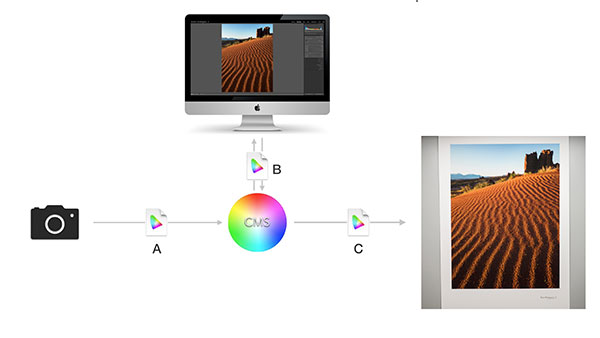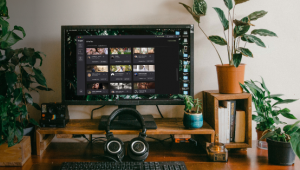Here’s Why ICC Profiles Are So Important for Printing Photos

You can request a free sample pack of Canson Infinity Baryta Prestige here.
There’s never been a better time to engage in printmaking and the potential it offers for creative expression. For me that’s the best reason to print your work; to take advantage of the tools and materials we have available today, from amazing desktop printers to fantastic fine art papers, to make something unique that can be seen and touched in the real world.
And the most exciting part is that you can enjoy the benefits of printing regardless of whether your prints are destined for a gallery, or simply your own walls at home.
Printing your own work can seem intimidating, particularly with respect to the accuracy of your prints. Color management is key to making accurate prints consistently and predictably. In simple terms, it provides a system that makes sure the colors that you capture are the same colors you see in your prints. An unmanaged workflow is susceptible to color changes that lead to unpredictable results and eventual frustration.
One way to think of color management is to imagine that every device (camera, computer, monitor, printer, paper) speaks a different language. Given that an image has to be translated from one device to another on its route to the paper, some kind of translation system is needed to ensure color accuracy. This is what a color management system does. It makes sure that a particular hue of “red” on one device is going to be the identical “red” on any other device, without any mistranslation.
Color profiles are the translators that do that heavy work of making sure our colors remain accurate. Profiles are device specific files that map the colors from one device to another. All applications and devices need to have accurate profiles to work reliably in a color managed system.
In a basic printing workflow for photography, the critical profiles needed are for your particular camera, your monitor, and the paper you’re using. Most raw processors include ICC profiles for all of the cameras on the market, and when you calibrate your monitor that also creates a profile to make sure what you see on screen is accurate. This is why calibrating your monitor regularly is really important for editing and printing.
Papers and Printers
Every paper and printer combination also needs a specific ICC profile to account for the inherent color and tonal characteristics of different papers. The purpose of the profile is to instruct the printer how to interpret the colors and make the most accurate print. The alternative is to let the printer decide on its own how to interpret the colors. However, given the cost of paper and ink, I want the most consistent and reliable workflow available for printing. In my experience letting the software manage color using the specific ICC profile for both the printer and the paper is the best way to ensure that.

There are two ways to get a profile for your particular paper and printer combination. All paper manufacturers provide generic, or “canned” profiles that you can download for free from their respective websites. Unfortunately, your results may vary depending on the quality of the profiles, and using high-quality profiles from a manufacturer like Canson Infinity makes color management much easier.
The other method of generating a profile is to make a custom profile for your paper and printer combination. While I have made my own custom profiles in the past, I have found the accuracy of Canson’s extremely good and use them without any issues. The proof is in the print, and if it’s accurate, that’s all that matters.
Once you download the profile from the website, be sure to install the profile in the correct location on your computer. Also, be sure to restart your application for the profiles to appear.
Custom Profiles
There may be times when you’ll need to create a custom profile. If your printer has a slight deviation from the one that was used to make the profile, then the profile will not be totally accurate.
In this case, making a custom profile will provide the best accuracy. While you can purchase your own spectrophotometer, you need to consider how often you’ll make profiles and whether the quality of the spectrophotometer you purchase is the same as the ones used by a profiling service that can make one for you—not to mention the learning curve. Again, I’m not suggesting that it isn’t a wise investment if you plan on profiling lots of papers, but for just a handful, I prefer to outsource that to a reputable service.

However, the fact is that printer manufacturing is much better than it’s ever been with minimal tolerances, and that means that the profiles provided for free from a high-quality source like Canson Infinity will be all you need to consistent and reliable prints that look great. And there’s no denying the fantastic quality of the paper manufactured by Canson, from the fiber based Platine to the luscious Printmaking Rag.
Printing may seem like a black art to some, but understanding a few basic concepts is all you need to make it enjoyable and potentially transformative. It can be the doorway to leads to deeper creative work, and a way to share your photography with others in the most meaningful way I know of.
You can find out more about my books, online courses, and field workshops on fine art printing by visiting robertrodriguezjr.com.

















































